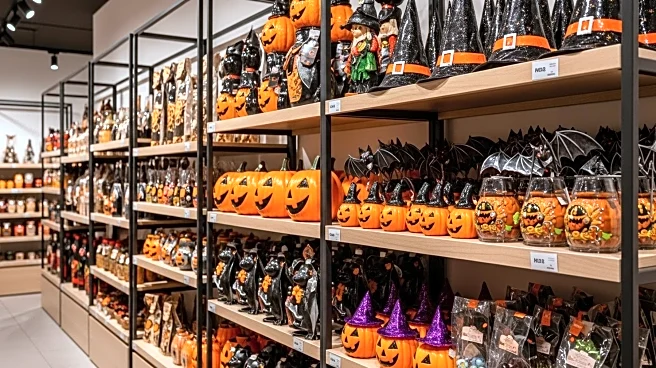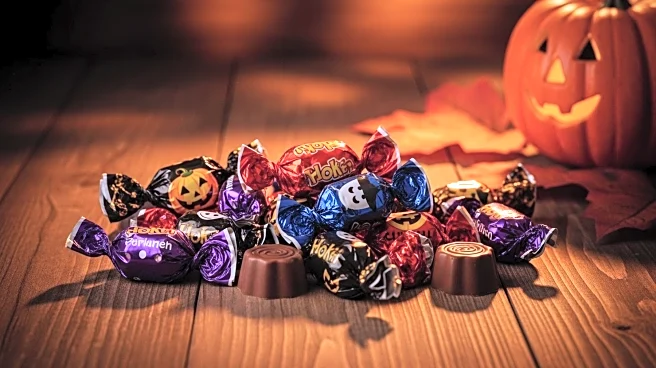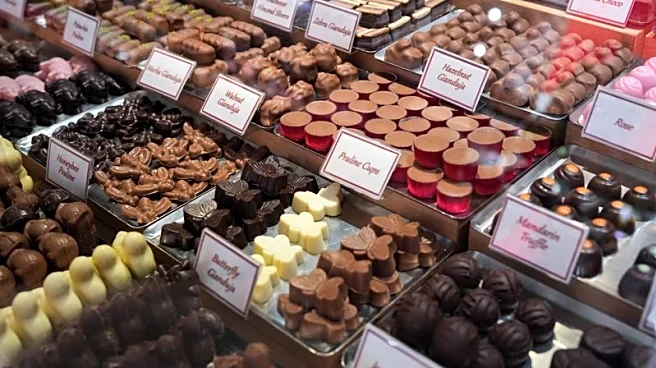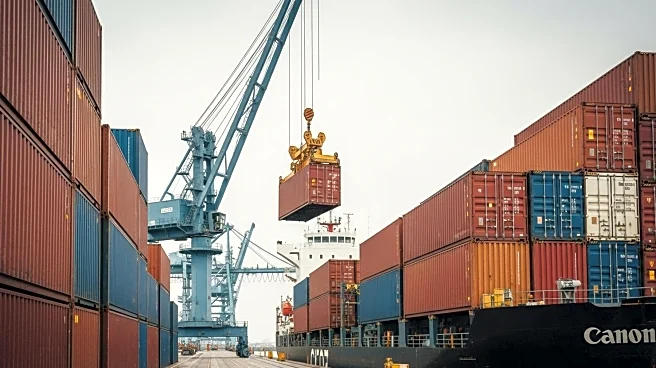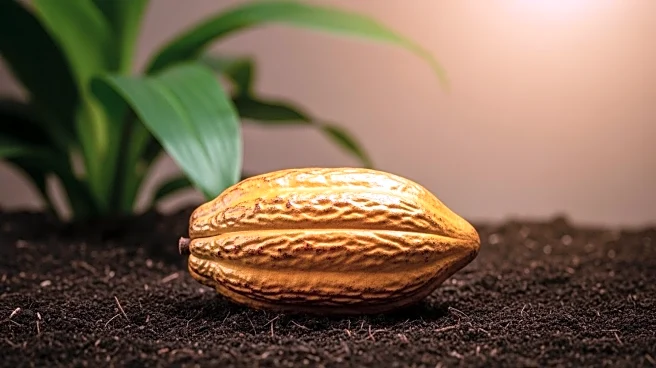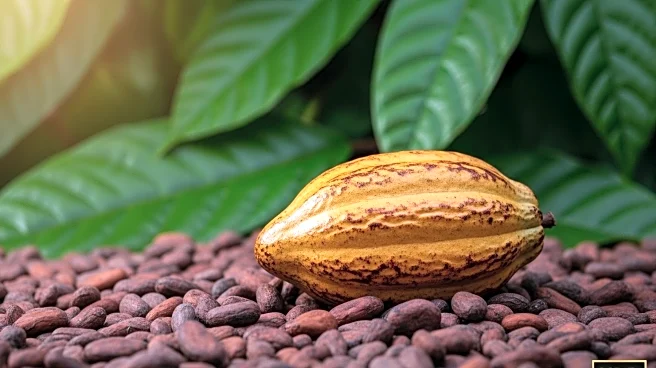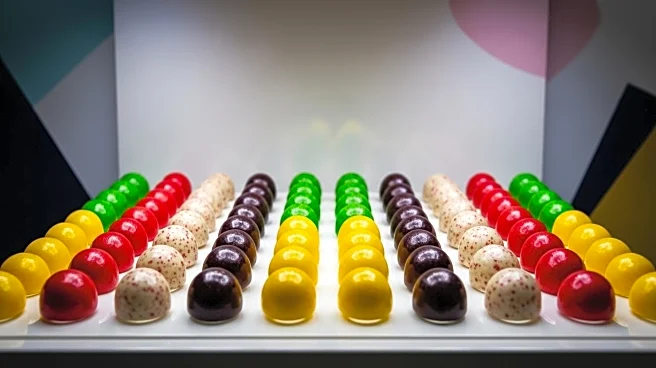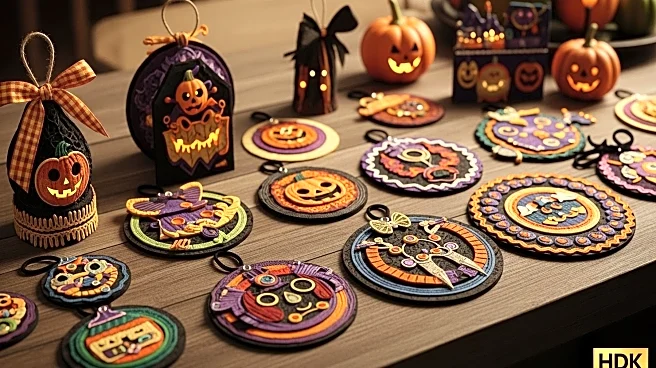What is the story about?
What's Happening?
Halloween chocolate prices are expected to remain high due to a combination of factors including tariffs and supply chain disruptions. The National Retail Federation anticipates spending on Halloween candy to reach $3.9 billion. Cocoa prices have surged due to adverse weather conditions affecting production in West Africa, which supplies 70% of the global cocoa market. Heavy rains and droughts have led to crop diseases, significantly reducing cocoa output in major producing countries like the Ivory Coast and Ghana. Additionally, increased transportation, fuel, and labor costs are contributing to the price hike.
Why It's Important?
The rising cost of chocolate is impacting consumer spending habits, with many opting for cheaper alternatives like hard candy and gummies. This trend could affect the profitability of chocolate manufacturers and retailers during the Halloween season. The high prices are also indicative of broader economic challenges, including supply chain vulnerabilities and inflationary pressures. Consumers may need to adjust their holiday spending, which could have ripple effects on retail sales and economic activity during the festive season.
What's Next?
Chocolate prices are likely to remain elevated until new cocoa crops can be harvested, which may take several years due to the time required for new plantings to mature. Manufacturers might explore alternative ingredients to mitigate costs, potentially altering product offerings. Retailers and consumers will continue to navigate these price changes, possibly leading to shifts in purchasing behavior and market dynamics.
Beyond the Headlines
The situation highlights the interconnectedness of global agricultural markets and the impact of climate change on food production. It underscores the need for sustainable farming practices and investment in resilient supply chains to mitigate future disruptions.
AI Generated Content
Do you find this article useful?



